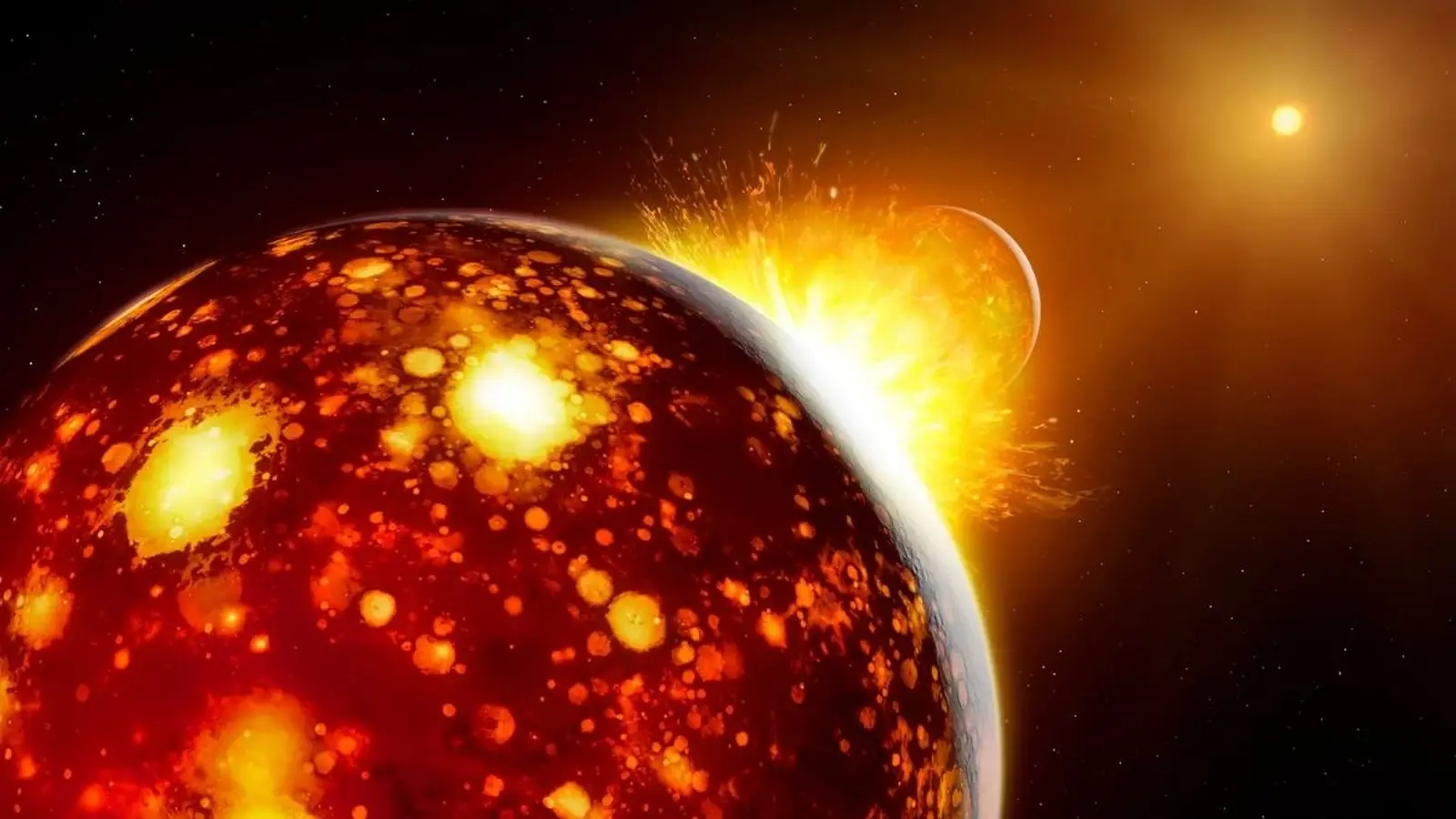5 Minutes
Roughly 4.5 billion years ago a Mars-sized planetesimal smashed into the young Earth, producing a molten, chaotic aftermath that eventually cooled into the Earth–Moon system. A new isotopic study suggests that this impactor, known as Theia, likely formed in the inner Solar System—perhaps as a close neighbor of the proto-Earth. Here’s how scientists traced Theia’s chemical fingerprint and what it means for our planet’s early history.
Reading planetary recipes: isotopes as forensic tracers
Materials that build planets carry subtle chemical fingerprints. Isotopes—variants of an element with different neutron counts—preserve clues about where and how planetary material formed. In a new collaborative analysis led by researchers at the Max Planck Institute for Solar System Research (MPS) and the University of Chicago, scientists compared isotope ratios from Earth, the Moon, and a range of meteorites to reconstruct Theia’s origin.
"The composition of a body archives its entire history of formation, including its place of origin," says MPS cosmochemist Thorsten Kleine, summarizing the study’s guiding premise.
Different elements distribute unevenly as a molten planet cools: heavy, metal-loving elements like iron and molybdenum migrate toward the core, while others such as zirconium remain in the mantle. Because of that separation, the present-day composition of a planet’s mantle and crust reflects both its original building blocks and any later additions—particularly from large impacts.
Non-carbonaceous vs. carbonaceous: meteorites as location markers
To narrow Theia’s provenance, the team turned to meteorites, nature’s time capsules. Meteorites that formed close to the Sun—within the inner Solar System—are classified as non-carbonaceous (NC). These rockier bodies were baked by solar heat, losing volatiles like water and much carbon. Farther out, in colder regions, form carbonaceous chondrites (CC): wetter, more carbon-rich and chemically distinct.

Thin slices of chondrite meteorites showing their namesake chondrules, consisting of small, embedded grains.
Comparing isotope ratios for elements such as iron, chromium, calcium, titanium and zirconium, the researchers found a striking result: the Moon’s chemical signature closely matches Earth’s mantle—confirming the basic outcome of the giant-impact hypothesis—but some isotopes linked to Theia did not match the usual building blocks of Earth. Instead, those ratios point to material born in the inner disk, with subtle differences that imply Theia could have formed even closer to the Sun than much of proto-Earth’s accreted mass.
What this tells us about the Moon-forming impact
Lead author and MPS geoscientist Timo Hopp summarizes the core finding: "The most convincing scenario is that most of the building blocks of Earth and Theia originated in the inner Solar System. Earth and Theia are likely to have been neighbors." If true, this paints a picture of a crowded inner disk where planetary embryos formed and migrated over relatively short distances before colliding.
That neighborly collision would have mixed materials differently than a strike by an object from the outer Solar System, which would have carried a markedly carbon-rich and isotopically distinct signature. The new isotopic constraints therefore refine models for the giant impact, suggesting the impactor’s composition was similar in broad terms to inner Solar System material but distinct enough to leave detectable traces in Earth–Moon samples.
Broader implications for planetary formation
These findings affect more than just a single event in deep time. They support a scenario in which the inner Solar System experienced localized compositional variations—imagine the protoplanetary disk as a poorly mixed batter, where neighboring pockets had slightly different recipes. Those chemical inhomogeneities then became inherited by emerging planetesimals and protoplanets.
For planetary scientists, that means reconstructing early Solar System dynamics requires not only orbital and impact modeling but also detailed isotopic mapping. The study also strengthens confidence in using meteorite classes as spatial markers for where material formed in the disk.
Expert Insight
"Isotopes are the fossils of planet formation," says Dr. Lina Cortez, a planetary scientist not involved in the study. "This work refines our view of the inner disk and shows how local chemistry can influence a planet’s identity—even between close neighbors. The result pushes modelers to account for small-scale chemical structure when simulating early Solar System collisions."
Beyond the academic implications, the research illuminates one of the most consequential events in Earth’s history: the collision that produced the Moon. Today the Moon continues a slow drift away from Earth at roughly 3.8 centimeters per year—an echo of a violent, ancient encounter that shaped conditions for life on our planet.
The new study appears in the journal Science, adding precision to a long-standing narrative of Earth's origins by using the tiniest chemical clues to answer a very big question: where did Theia come from?
Source: sciencealert
Comments
Marius
Feels a bit neat and tidy for a chaotic early disk, but cool, isotopes as cosmic forensics. kinda want more data tho
labcosm
Wait, so Theia was basically Earth's next door neighbor? sounds plausible but are isotope maps that precise, or could the impact mix everything up?


Leave a Comment